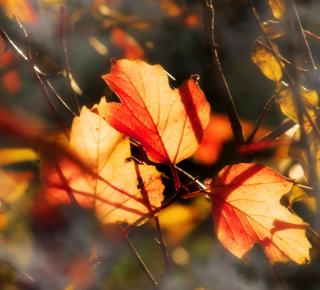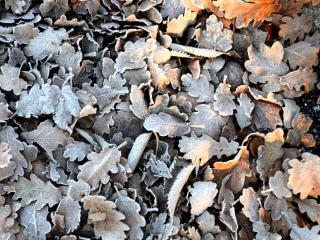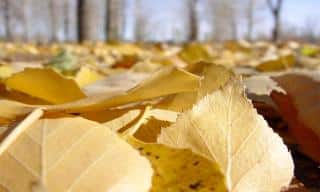

In fall, when trees and shrubs lose their foliage, a thick blanket of useful dead leaves forms in the garden.
It is the season to unclog gutters and pick up leaves, and use them for gardens and vegetable plots to make the soil fertile and protect more vulnerable plants.
In the garden, everything has a purpose and nothing is lost. Here is how to turn your dead leaves into something incredibly useful.
Though all types of leaves will have their uses, it’s good to know that different types of leaves are suited to different purposes.

Most fungus tend to overwinter and then come back stronger than ever when the sun shines again. The only solution is to destroy these with fire.
Some leaves take a very long time to break down, such as bay leaves, plane tree leaves or wild privet. These can take years to break down. Their nutrients won’t be available for plants to use immediately.
Other shrubs or trees that drop thick, leathery leaves include holly, yaupon, mahonia, a host of palm shrubs. Many larger heath plants like camellia and magnolia also have thick, hard-to-break-down leaves.
When winter tiptoes in and the first frost spells appear, good mulch can protect even the most vulnerable plants.

Note that if your area has really harsh winters, it is best to bring bulbs and tubers indoors during winter, because dead leaves might not be enough.
If you have a banana tree, make a circle around its leaves with wire fencing and fill it with a very thick layer of dead leaves, around 32 inches (80 cm) thick, even up to 40 inches (1 m). You can also do this for new plants.
Remember that dead leaves are an incredible source of organic material for all your plants, including the soil in your vegetable patch.
Where only root vegetables survive winter trials, you can spread a thick layer of dead leaves over the entire vegetable plot, and as they break down they will free organic material.
This thick layer will support the local ecosystem during winter, and worms and other insects will keep working to make the earth a better place.
Dead leaves can also serve to protect root vegetables that were not yet harvested against freezing, and this will ease the task of harvesting since you only collect as much as you need.
Some biennial vegetables such as artichoke need to be protected against winter cold.
Dead leaves hinder weed growth, which will make that an easier task when the sunny days are back.
If you still have dead leaves left over after all these recommendations, still, don’t do away with them!

Just like they do in the vegetable patch, leaves make underground life easier and this promotes humus and micro-organism development.
Last of all, if any dead leaves are left over, throw them onto the compost, where again, choosing healthy leaves is a prerequisite.
Ask around the neighborhood – many neighbors simply dispose of their raked leaves in bags. Knock on their door to ask if you can use them yourself!